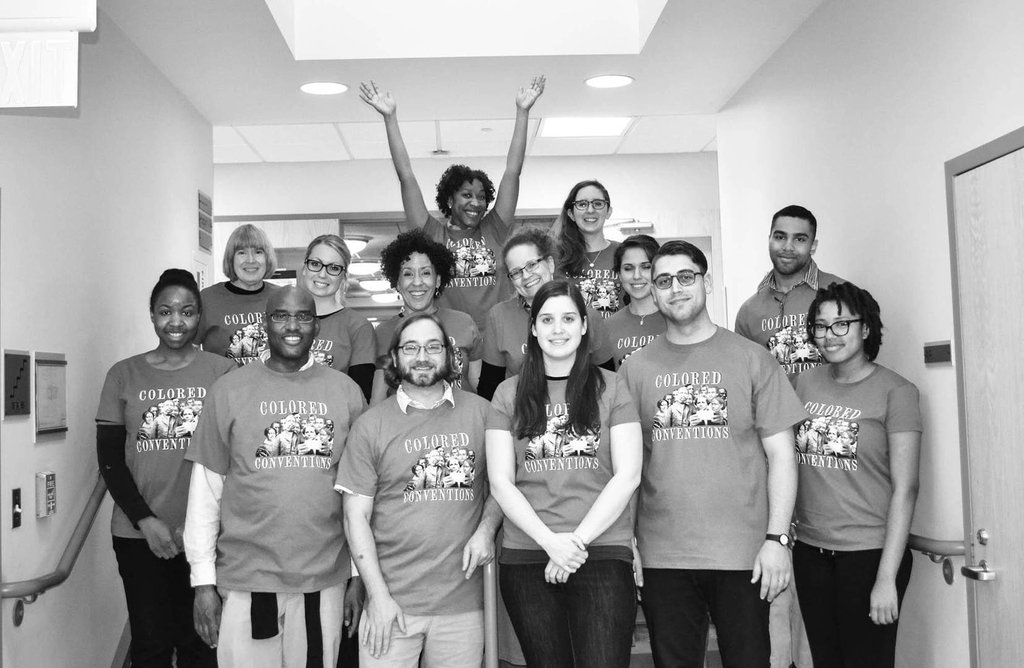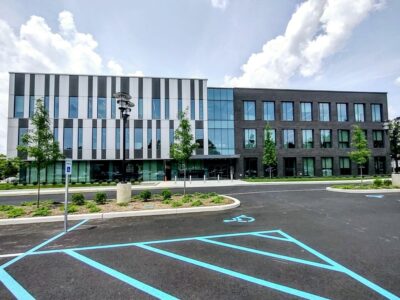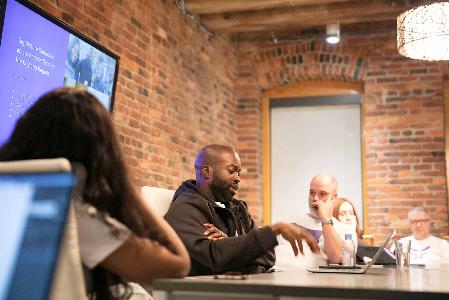In her effort to shine some much-needed light on the political “Colored Conventions” organized by free and fugitive Blacks throughout the 19th century and all across the U.S., P. Gabrielle Foreman has come across some fascinating documents.
One example? The thank you notes that convention attendees sent to the boarding houses they stayed at — the “19th century equivalent of Airbnb reviews,” Foreman said.
These thank you notes, later printed in Black newspapers during the time period, represent just one of the many types of documents that the University of Delaware team behind the MLA award-winning Colored Conventions Project (CCP) is putting together into digital exhibits and a comprehensive database on this topic. Other documents include everything from the meeting minutes of the more than 150 conventions that took place around the country, to the food menus and information on the buildings where these meeting took place.
“These are all something digital tools make possible,” said Foreman, cofounder and faculty director of the CCP. “So we’re really interested in innovation technologies that allow us to tell compelling stories to bring 19th-century history to life for 21st century readers and viewers.”
All this research is currently housed on Omeka, a web-publishing platform commonly used by libraries and museums to host archives and scholarly collections, but Foreman said they’ll be moving to WordPress soon in order to create as much of an interactive experience as possible, whether it be through podcasts or video exhibits.
The creation of the CCP came out of an assignment she gave in a graduate class in 2012 that involved Facebook plugins where you could see how you were connected to your friends’ friends. This fascinated Foreman. Without any knowledge of coding, she enlisted the help of her students to start making Facebook pages for convention delegates. It wasn’t until one student mentioned that there were educational sites specifically for this kind of research that the CCP was born.
Today, the 25 people working on the CCP at UD meet every week for three hours, each working in specific committees like Digital Archives, Grants, Social Media and Community and Historic Church Outreach.
But the number of people who have contributed to the project overall is closer to 1,000, with volunteers from all around the world chipping in however they can. Congregation members of African Methodist Episcopal (AME) churches, with the help of historiographers, have helped to transcribe the many conventions held at these churches.
It’s one way the project brings in “the living, cultural descendants of the people who were involved in this 70-year movement to be involved in the resurrection of the history itself,” Foreman said.
There have even been instances where people have contributed to the project without the CCP knowing, like with Judith Weisenfeld, a professor of religion at Princeton University, who tweeted that she transcribed some convention minutes while she was on sabbatical. History teacher John Rosinbum recently wrote a blog post on American Historical Association Today in which he detailed the potential of having students use the CCP for research curriculums.
Great project and deserving of recognition. I enjoyed contributing to the transribing while I was on leave and had more time. @CCP_org https://t.co/HUOyFYWkD4
— Judith Weisenfeld (@JLWeisenfeld) December 14, 2016
This open-source spirit of the project is something that the team hopes to emphasize further, with the next big phase for the project being to collect legislative petitions created at these conventions, of which none have been collected so far. They’ll soon be working with the first of their state satellite partners, Indiana, to help organize professors at Indiana institutions and community-based organizations to find these kinds of materials.
It may be surprising to some how documents like the legislative petitions have remained hidden for so long, but for Foreman it all comes back to her reasoning as to why the Colored Convention movement has a whole has been so understudied: compared to movements like abolitionism and the Underground Railroad, Colored Conventions more prominently show “Black agency, Black leadership, Black organizational power.”
As just one example, there were conventions solely dedicated toward collecting real data on African Americans before the census was properly doing so.
“Blacks were very interested in data collection about their own population that could represent the wealth, the community organizations, the self-sufficiency that antebellum Blacks were working so hard to achieve while society was working so hard to erase the evidence of those achievements,” Foreman said.
“When we only emphasize slavery, we don’t realize the extent to which free Blacks were mobile … and we underestimate the ways in which Blacks were involved in the intellectual conversations and directions of the era.”
Before you go...
Please consider supporting Technical.ly to keep our independent journalism strong. Unlike most business-focused media outlets, we don’t have a paywall. Instead, we count on your personal and organizational support.
Join our growing Slack community
Join 5,000 tech professionals and entrepreneurs in our community Slack today!




